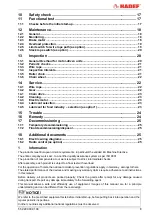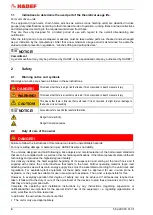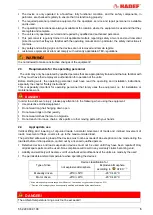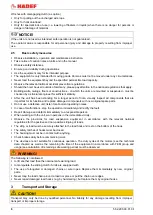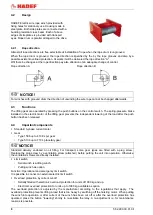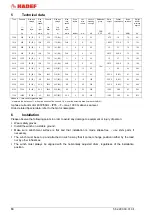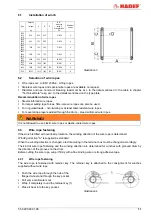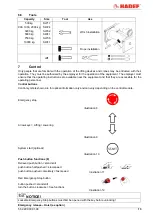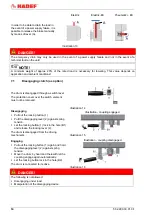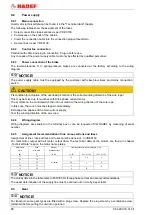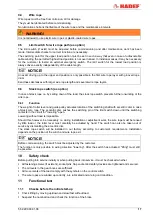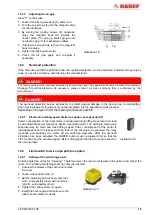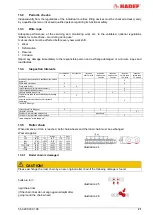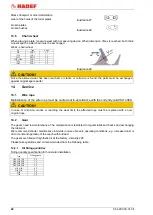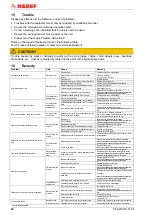
5.52.290.00.01.08
15
8
Operation
The following, important points must be observed when operating the equipment:
Read the safety instructions.
Never load the devices beyond their working load limit.
When changing the motor turning direction, allow the motor to come to a standstill first.
The prescribed maintenance intervals must be adhered to.
Observe the duty cycle, i.e. intermittent operation S3-40% ED (as per VDE 0530) means that in a period
of 10 minutes the motor can operate
– no matter the height of the load – for 4 minutes. It is therefore
irrelevant whether the 4 minutes are continuous (i.e., in case of very high lifting heights) or are made in
intervals.
DANGER!
In particular, use is not permitted:
for tearing loose fixed loads, dragging of loads as well as diagonal pulling
for pulling against a fixed point without additional safety and/or measuring equipment against exceeding
the nominal load
in potentially explosive atmospheres, unless the equipment has been modified for this purpose and
this is shown on special type plates it carries for this purpose.
in reactor containments
for transporting persons
for holding lifted loads
for scenic use
when persons are under suspended loads
NOTICE!
The overload is set at the factory according to the specifications in the test book. During operation, the
nominal load of the unit must not be exceeded!
9
Commissioning
9.1
General
The operator of the unit is responsible for the entire system.
According to the Ordinance on Industrial Safety and Health, a hazard analysis must be carried out by the
operator.
Observe the respective national standards, regulations and directives of the responsible bodies at the place
of operation.
NOTICE!
Hoists up to 1000 kg capacity and without motor-driven trolleys of hoisting unit must be tested by a
“qualified person” before putting into operation for the first time.
Hoists of 1000 kg capacity and up or with more than one motor-driven hoist movement; i.e. lifting and
trolley movement, must be tested by a “licensed qualified person” before putting in operation.
An exception is “hoists ready for operation” acc. validated national regulations with EU-declaration of
conformity.
Definition “qualified person” (former expert)
A “qualified person” has learned, due to occupational training and experience and the job that the person has
done, the skills needed to tests the material f
or one’s work.
Definition “licensed qualified person” (former approved expert)
A “licensed qualified person” has, due through special occupational training, knowledge about testing of the
material for one’s work and knows the national accident prevention regulations and other prescriptions and
technical regulations. This person must test the material for one’s work regularly with regard to design and
kind of use. The license will be given to qualified person be the approved supervision authorities (ZÜS).



